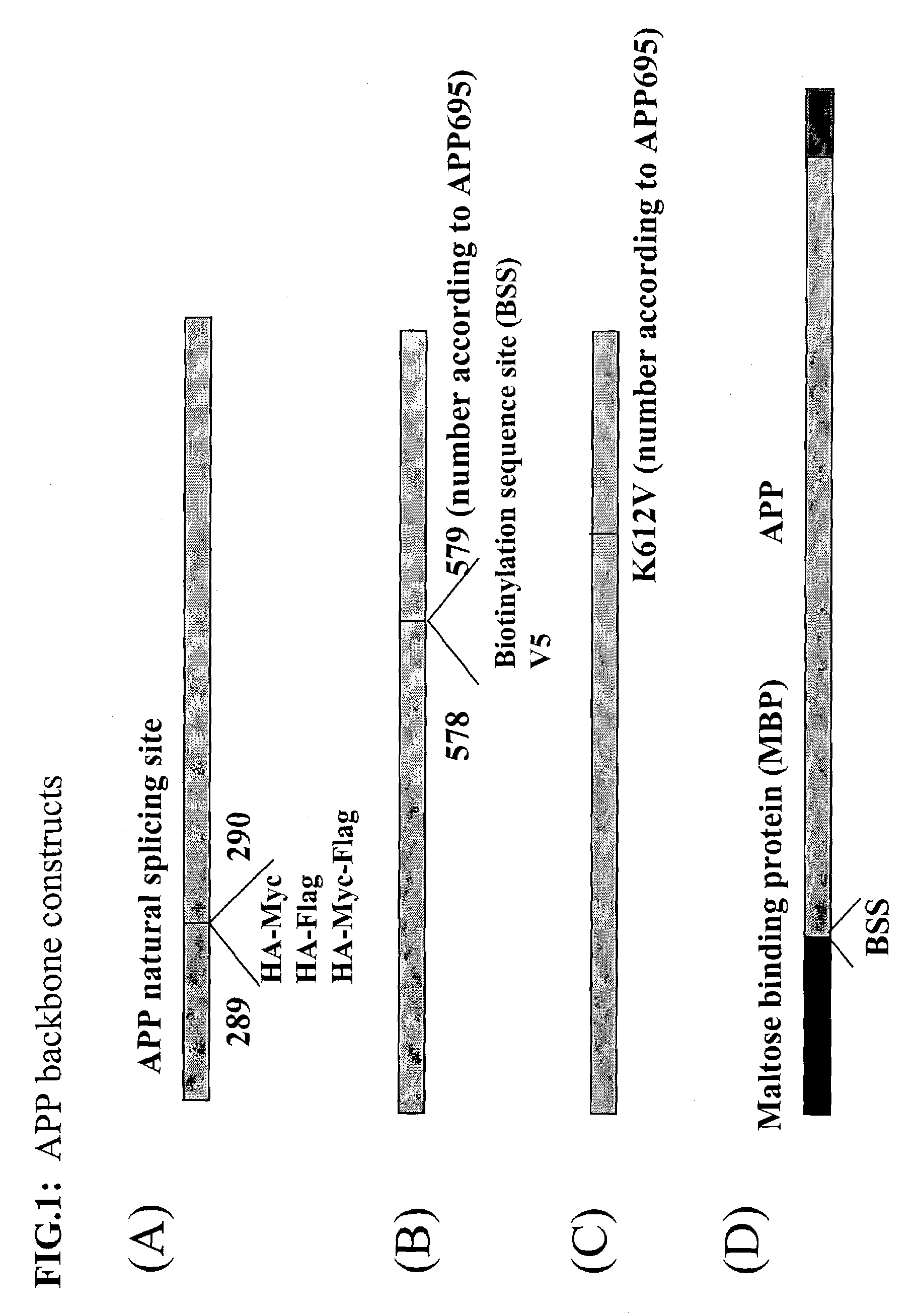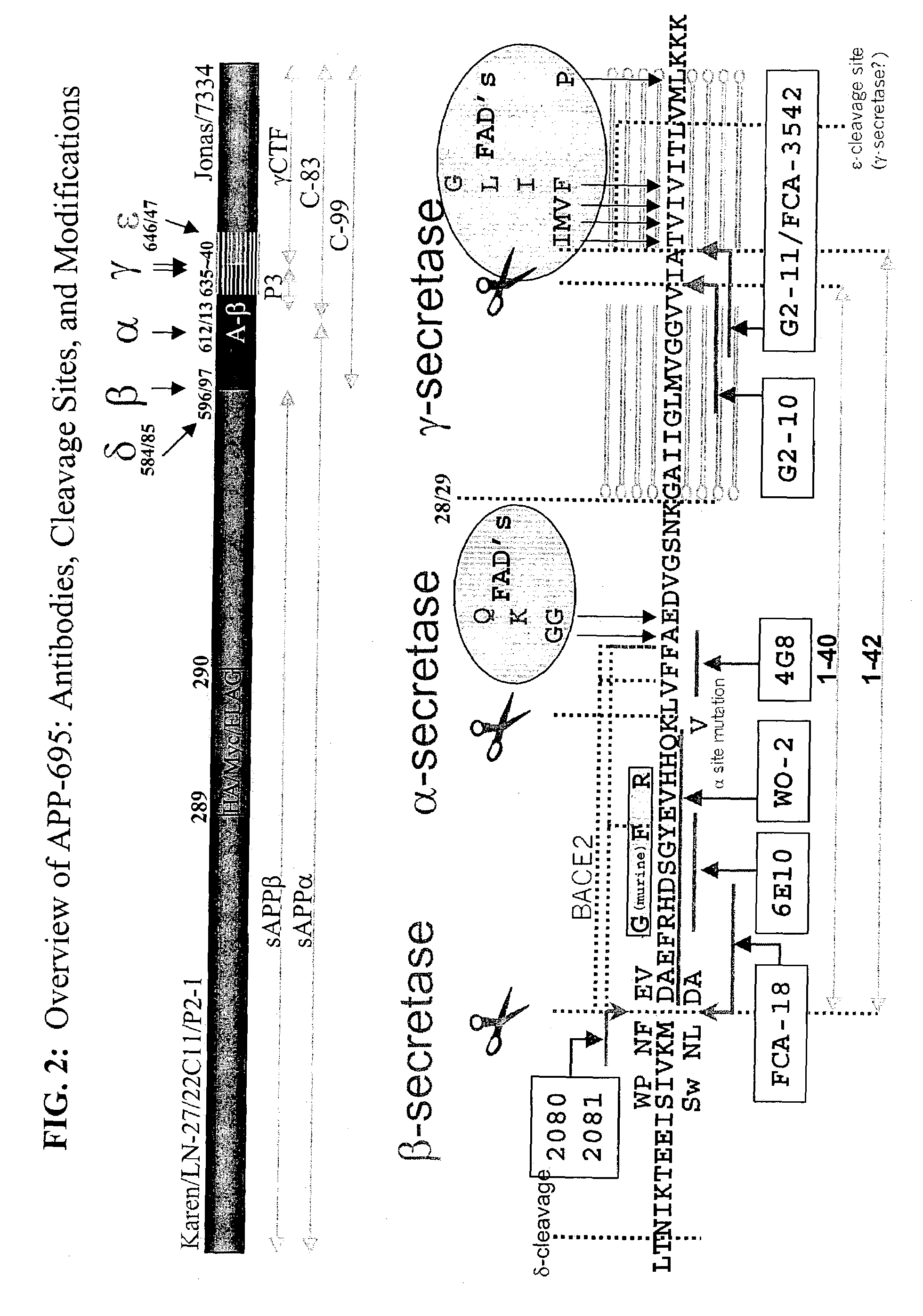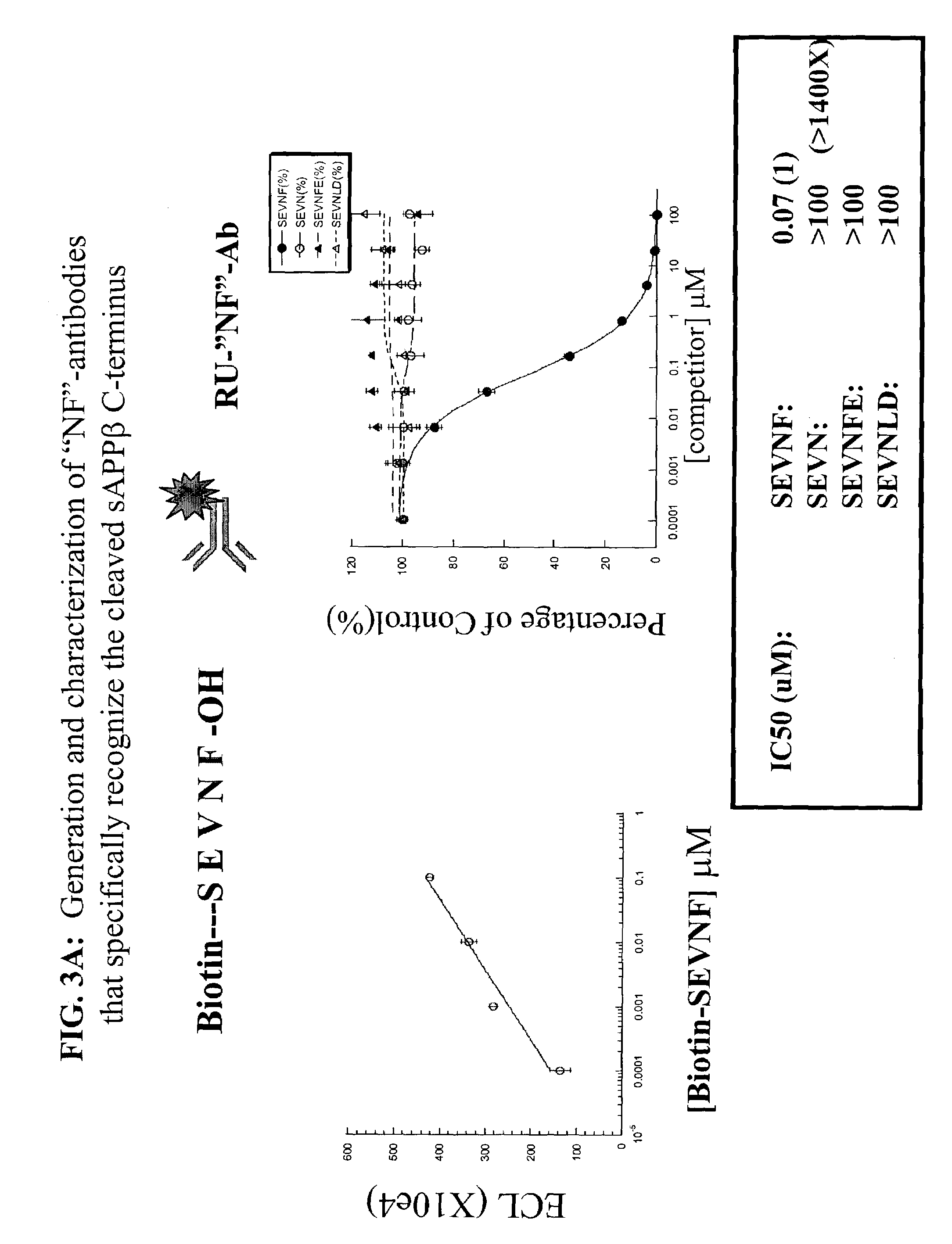Assays using amyloid precursor proteins with modified beta-secretase cleavage sites to monitor beta-secretase activity
a technology of beta-secretase and amyloid precursor proteins, which is applied in the field of alzheimer's disease, can solve the problems of no approved pharmaceuticals for treatment and inconvenient identification of assays, and achieve the effect of improving the substrate of -secretas
- Summary
- Abstract
- Description
- Claims
- Application Information
AI Technical Summary
Benefits of technology
Problems solved by technology
Method used
Image
Examples
example 1
[0363]Polynucleotide sequences that code the mutants disclosed herein, and compared in Table 1 (shown in Example 4, below), were constructed as follows. All mutant polynucleotide constructs were derived from a plasmid designated pRBR899 or pRBR121. Both plasmids carry βAPP695-derived cDNA (either wild type or with the K612V mutation) operatively linked to the CMV promoter. The plasmid pRBR121 was generated by site directed mutagenesis via PCR with an annealed oligonucleotide in which the codon for the K at position 612 (based on the 695 amino acid version of APP) was replaced by a codon for V.
[0364]Thereafter aliquots of both pRBR899 and pRBR121 separately underwent replacement of the 26 bp BglII-EcoRI fragment of βAPP695 with an oligonucleotide that had been prepared to introduce a specific desired substitution of one or more of the four amino acids at the four positions flanking the β-secretase cleavage site (resulting in desired mutations of the APP in one or more of the four cod...
example 2
[0367]Antibodies of the present invention were raised against and recognize epitopes (alternately referred to as “neo-epitopes”) formed by the β-secretase cleavage of the modified β-secretase substrates of the present invention. Antibodies were raised against polypeptides mimicking the P1 free carboxylic acid end of a modified sAPPβ that is exposed following cleavage by β-secretase of the modified β-secretase substrates. Antibodies also were raised against polypeptides mimicking the P1′-free amino group end of a modified carboxyterminal fragment (CTFβ) that is exposed following cleavage by β-secretase of the modified β-secretase substrates. At a minimum the modification of modified sAPPβ and the modified CTFβ comprises modification of the amino acid sequences at the P2-P1-P1′-P2′β-secretase cleavage site. An example of an antibody raised to the P1 free carboxylic acid end of a modified sAPPβ, and an example of an antibody raised to the P1′-free amino group end of a modified carboxyt...
example 3
[0389]The following provides an example, not meant to be limiting, of a cell-based assay that uses modified APP substrate and measures rate of enzymatic break-down of such substrate by detection of a secreted fragment (sAPPβ) of such modified APP substrate.
[0390]A stable cell line has been generated by transfecting APP695 containing the HA-myc-FLAG epitope in the amino portion of the protein, the K612V (APP695 numbering) mutation altering the alpha-cleavage site, and the modified NFEV BACE cleavage site into HEK293T cells. Standard cell biology protocols were used to generate the cell line. (Ref: Jakoby, W. B. and I. H. Pastan, Eds. (1979). Cell Culture. Methods in Enzymology. San Diego, Calif., Academic Press, Inc.) A polyclonal antibody that recognizes the COOH-terminus of the BACE cleavage product of the NFEV-variant of APP has also been generated. This antibody, called 2081 / anti-NF IgG, was generated against the SEVNF peptide and recognizes the cleaved NF-COOH terminus generated...
PUM
| Property | Measurement | Unit |
|---|---|---|
| body weight | aaaaa | aaaaa |
| pH | aaaaa | aaaaa |
| pH | aaaaa | aaaaa |
Abstract
Description
Claims
Application Information
 Login to View More
Login to View More - R&D
- Intellectual Property
- Life Sciences
- Materials
- Tech Scout
- Unparalleled Data Quality
- Higher Quality Content
- 60% Fewer Hallucinations
Browse by: Latest US Patents, China's latest patents, Technical Efficacy Thesaurus, Application Domain, Technology Topic, Popular Technical Reports.
© 2025 PatSnap. All rights reserved.Legal|Privacy policy|Modern Slavery Act Transparency Statement|Sitemap|About US| Contact US: help@patsnap.com



